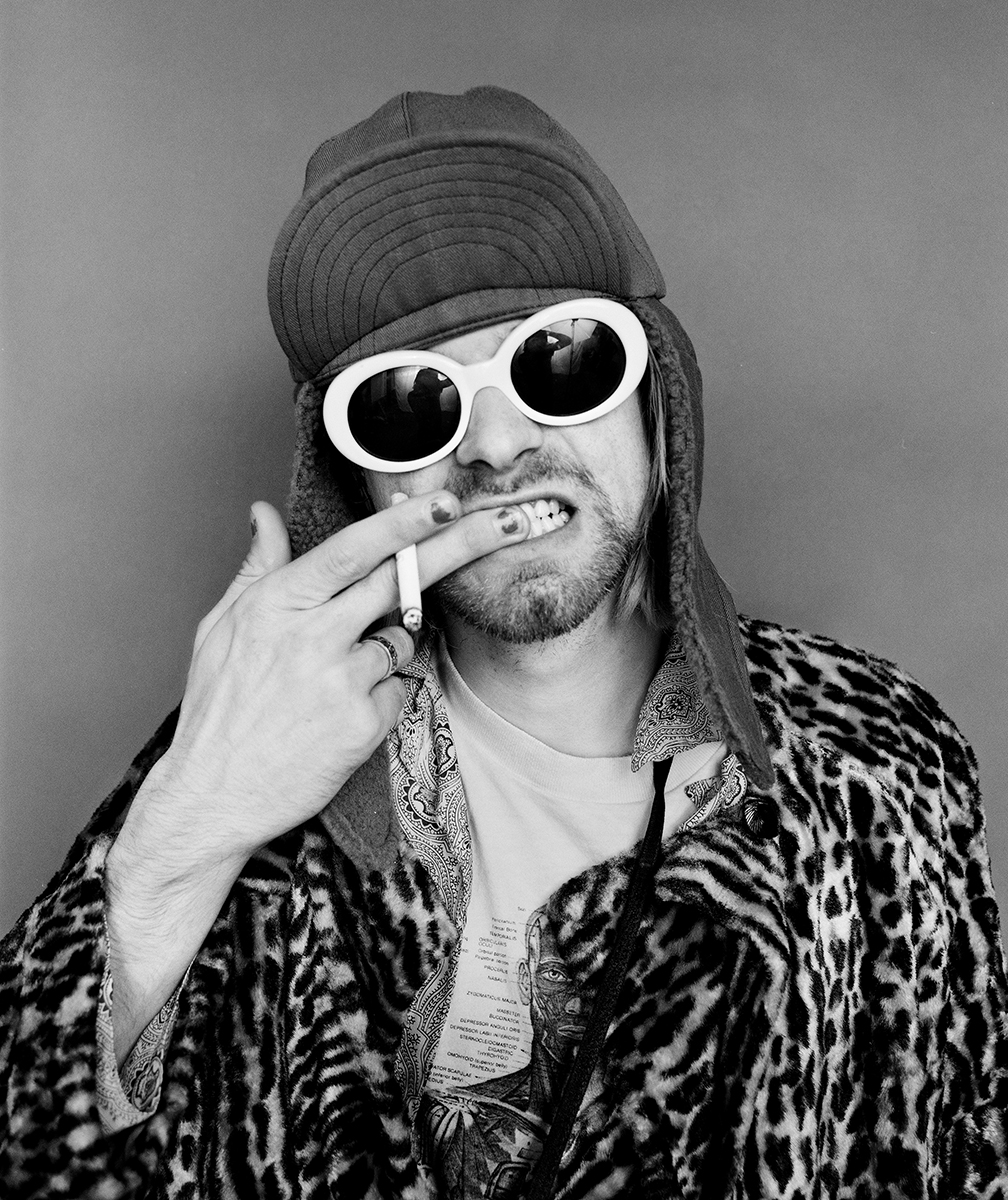Last Updated on 02/20/2019 by Chris Gampat
All images by Jesse Frohman. Used with permission.
The assignment was to photograph Kurt Cobain and Nirvana for the London Observer. Jesse Frohman had everything ready to go for an 11am shoot on location, when the call came in that he would have to photograph the band in the basement of the Omni Hotel, which wasn’t the agreed-upon location. Moreover, Nirvana frontman Kurt Cobain was hours late for a five-hour shoot, and when he did arrive, he was high. This, however, didn’t hinder Frohman, an accomplished portrait photographer who had worked for Irving Penn, a legend in his own right. The shoot at the Omni Hotel led into Nirvana’s iconic Unplugged in New York concert with MTV. Now, more than 20 years after Cobain’s death, Jesse has compiled that shoot into a book, “Kurt Cobain: The Last Session.”
You can check out more of Jesse’s work on his website. But we talked to Mr. Frohman about the last iconic session nearly 20 years later.
Editor’s note: This interview has been edited and condensed.
Phoblographer: It’s been about 20, 21 years since that photo session with Nirvana. When did the idea for a book come together, and how did you approach it?
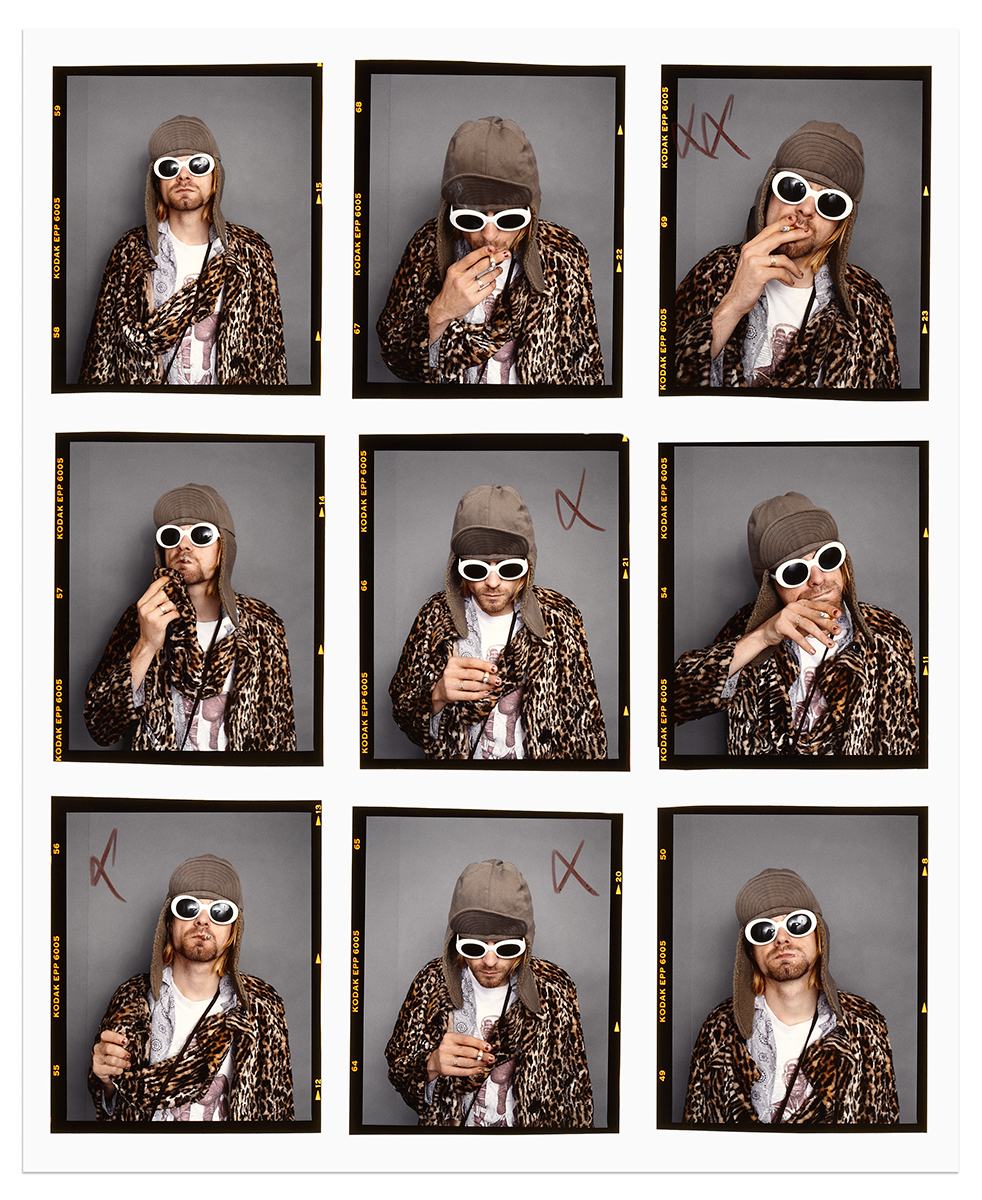
Jesse: That’s a good question. It was discussed over a period of time with my friend and creative director, amongst a few other confidants, and I resisted for quite a while about doing a book like this because it’s one subject and I always thought that I would do more of a monograph of a lot of my earlier work. But it became more fascinating of an idea as time went on because of the 20th anniversary of Kurt’s death, and how his iconic stature has risen even in the last few years almost exponentially. And I just thought it was a really important thing to document. All I had at that point were a few images that I sold for exhibitions, prints and a few initial images released through interviews online, and I thought there was nothing coherent about this shoot. I’m always fascinated when I see other people’s work in its entirety on one subject. So, I was thinking what fascinates me, and also what I think that the public would really want and the fan base for Nirvana and Kurt would love to see. At some point it became an easy decision. For a while, I wasn’t sure that it was the book I ought to make.
Phoblographer: The book is a good mix of black & white and color images. And I’m wondering, what do you think each offers that the other doesn’t in the context of this shoot?
Jesse: Well, I actually think the color images offer is a nice counterpoint because the color, to me, is always the reality of that moment. It brings everything that we understand about the real world into the forefront. And black & white gives a sense of imagination. That’s how I look at black & white and color. I think the black & white takes you out of the common experience of life, and into something almost heroic and lasting in a way. So, the color is really a counterpoint to the black & white, and we shot about equal amount of color and black & white. But I see portrait work, my portrait work, mostly in black & white. I like the form and content over the color, especially with skin tones. I love color for landscape and still life, so it’s just a way of viewing and that’s how I wanted to balance the book out.
Phoblographer: Now, how did you approach this shoot technically? What did you have in your bag: cameras, lenses, rolls of film, flash? I know you had a seamless background that you used.
Jesse: Yeah, we definitely had a seamless fortunately. We had to work on the go because we were planning for a location shoot, and then we had to shoot in a hotel. We had a seamless. I don’t know the exact equipment we had. We obviously had strobe lights, and they were probably portable lights and a Pentax 67, a couple of bodies of Pentax. We were shooting 220 film, color and black & white- the color was actually transparency film. Yeah, it was all transparency. I think that’s all I remember. I don’t really remember the lens I used. It was probably a 110, but I can’t remember for sure.
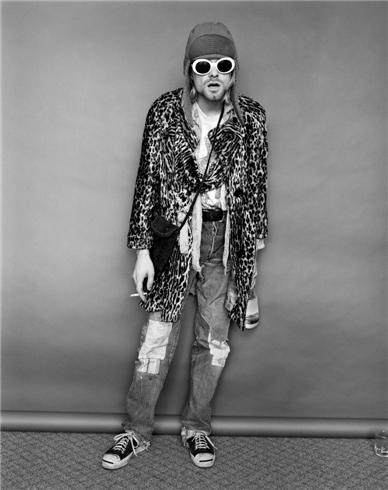
Phoblographer: So, the image that seems to be the most widely regarded is Kurt Cobain: Standing with Evian Bottle. Is that the one that resonates with you the most or is there another one?
Jesse: It’s difficult for me to choose my favorite picture. When I shoot portraits, I’m looking for the picture, I’m not looking for a sequence of pictures. And I’m trying to find the one perfect image that expresses everything I want to express about that person: the collaboration of that person coming to me, and I bring him my vision to what I think the picture should look like. When that happens, I almost feel that the shoot is done. I usually explore it a little bit longer, so in this case, when I look back on it, I saw this picture and I said, “That’s it. That’s the one.” This says everything I need to say because I want to show the full body. I think he looked like he was hanging on a hanger, you know, and I love that quality about the whole thing and the way he kind of droops all the way down to his feet. So that was the one, but as time went on, I kept on finding different ones that expressed different things. That’s another reason I did the book because I saw when I looked back at this film and trying to decide to make the book, I saw it as more of a cinematic type of portrait. So that all the pictures together create one portrait. Even though I would say there are four or five images individually that I really love and two of them are on the cover of the book, one for the international edition and one for the U.S. edition, black and white and a color cover each. So I do have my favorites, but if I had to choose one, it would be the full length one because I think it says the most.
Phoblographer: In an interview with Rolling Stone, you had said, “Something about these pictures transcends connecting to a person.” What do you think it is about those pictures that does that and what does that mean?
Jesse: I think sometimes some shoots can say more than what you’d expected them to say, so for me, I think this portrait says a lot more than, “Oh, this is a picture of Kurt Cobain.” I think in a way he’s almost like a superhero the way he’s dressed, and I think it says something about fashion. I think it says something about a man and a moment. It says something about photography. So, for me, these pictures transcend, in a lot of ways, what I think a good portrait is. And I don’t necessarily take credit for all of that. I think of it as a perfect storm. It’s a coming together of different elements that make a picture super successful, and one of them is that Kurt himself has attained this iconic status across generations and cultures and interests. These pictures have influenced a lot of people in fashion. It’s not a picture of me in there dressed; it’s Kurt. He brought his clothes. He put it together. It is how it is. He brought what he brought, and I brought what I brought. The picture becomes bigger in a way, and although I have many other portraits that I love very much and am very proud of, I can’t say that they’ve obtained this kind of status. Some of that’s just a pure interest in Kurt, but also just as a portrait, I don’t get bored of looking at these at all.

Phoblographer: During the time that you had with Kurt and the band, and given the conditions that that shoot existed within, did you find that your style of shooting changed at all during the shoot? Were there things you had to adapt to, given what was going on?
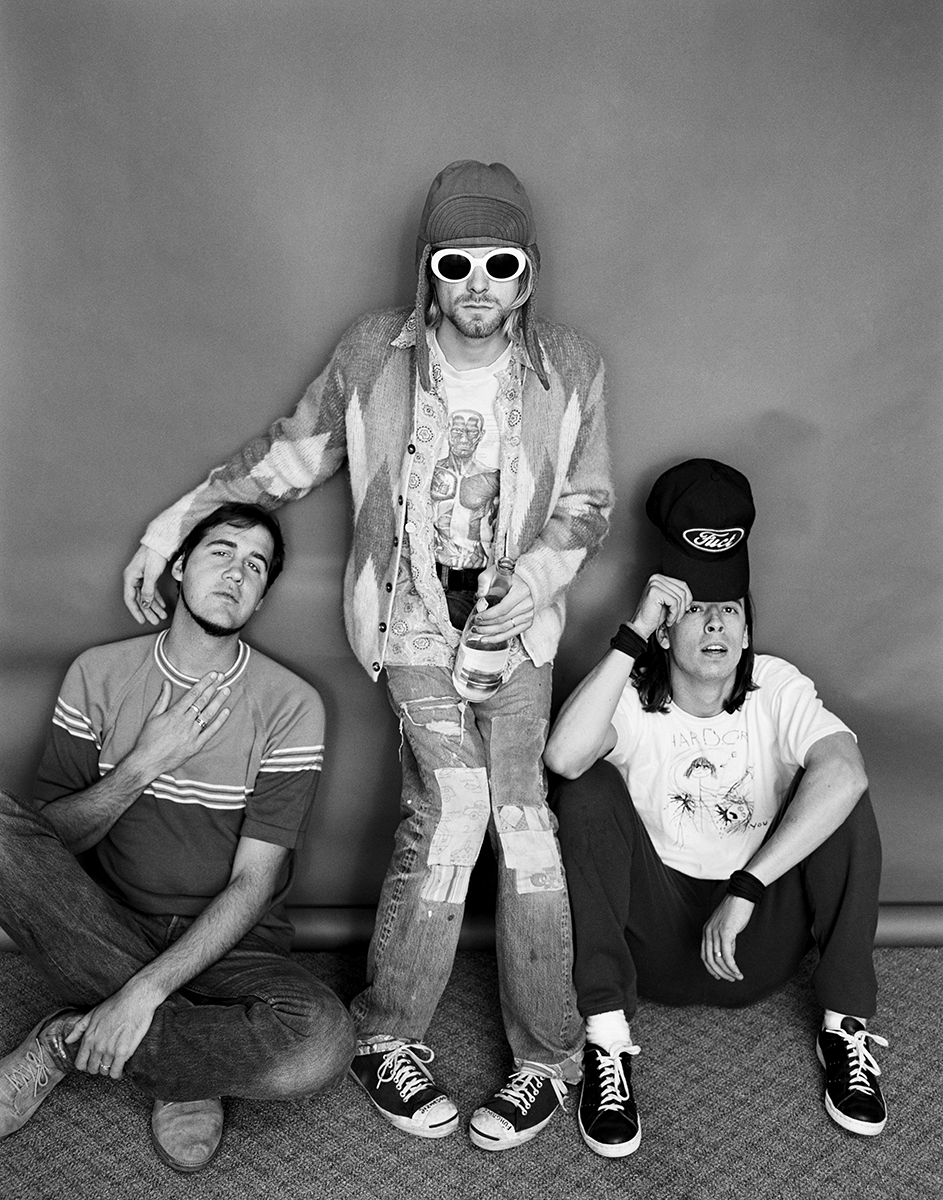
Jesse: Oh, well, sure. We had agreed upon with the band’s management that we would shoot on location, and that all of a sudden, we were told that we had to set up in a conference room in the basement of a hotel. Everything changed. My whole universe in that moment changed, and listen, you’re dealing with celebrities, and rock stars are even more uncontrollable than actors. I don’t know any photographer that has had every shoot gone in a very smooth way. I wouldn’t say my shooting style changed. I would say that the elements that surrounded that shoot changed, and we had to change with them. In the way I take a picture, no. I was just rushed, but otherwise, I did the pictures just as I always thought about taking portraits.
Phoblographer: Was there something from the shoot that has stuck with you in the 20 years since, 21 years since?
Jesse: Yes, that a portrait that was just of a great band has taken on a life all its own. I never expected that. You know, I’ve been asked if it was such a great picture when I took it. I was concerned I didn’t have a picture at all because we had such little time. And then I saw that I had a really good picture, but you know, I didn’t have as many pictures as I had hoped I would. I had different expectations, so at first, I thought it was a very successful shoot considering what I had to work with. So that surprised me. You never know where life will take you and your work. I said to Bert Stern once that Kurt will become my Marilyn. And he said to me,
“No, he won’t.” And I said, “Oh, of course not because no one can have a Marilyn.” But he is my Marilyn.
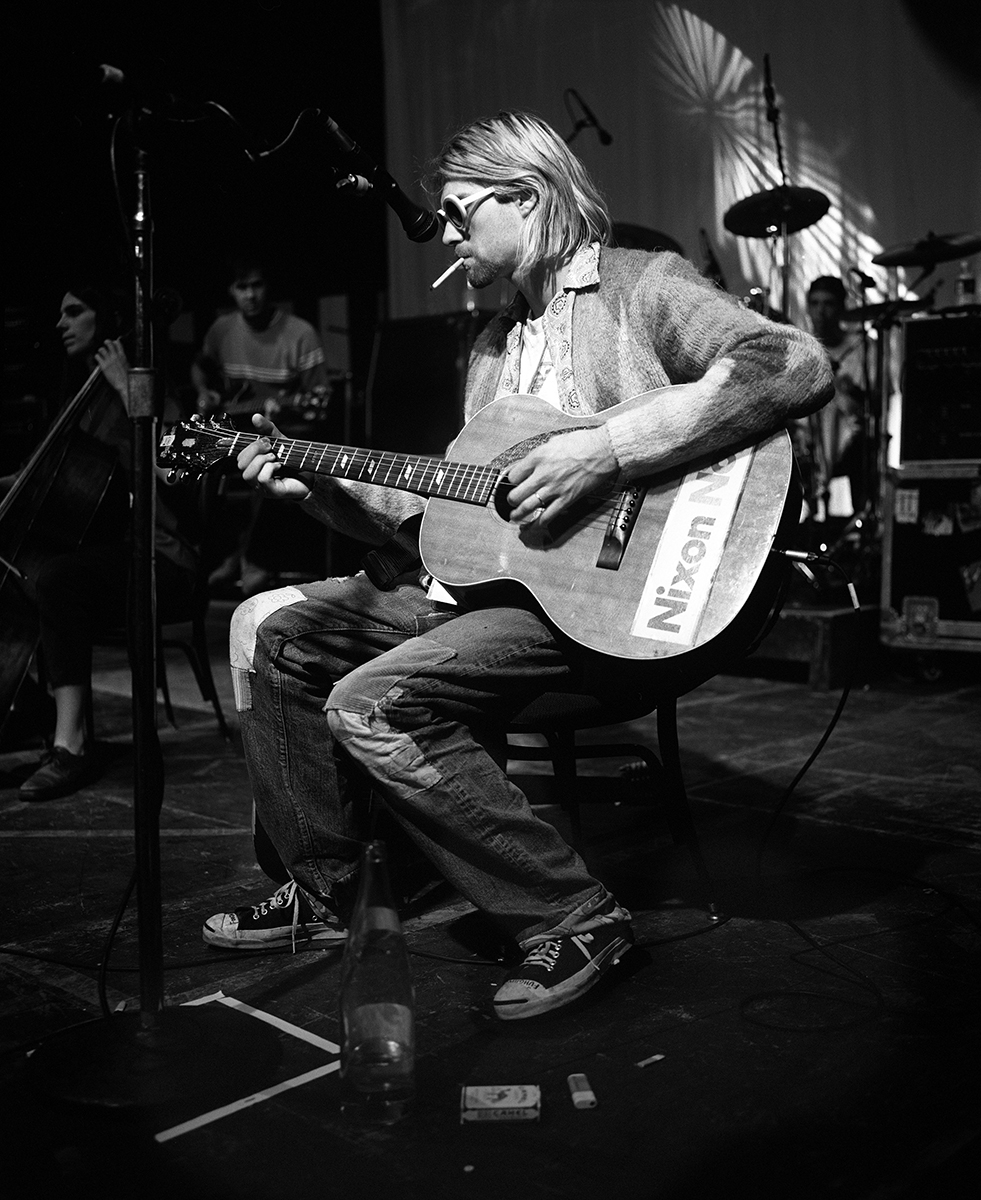
Phoblographer: If you could give one piece of advice to a portrait photographer just starting out, what would it be?
Jesse: I would say find your voice because a lot of times people understand the collaborative process of a really good portrait takes on, and you have to find how to get that through your style of picture-taking. So I would say find your voice, and your method in taking the portrait. Forget the equipment entirely. It’s not about equipment or lighting. That comes, and that’s an integral part of it, but find what you want to say and what you want to do with your portraits and then everything else will come from that. I think people get too caught up in the techniques and the equipment. And then the pictures are lacking. Understand what makes a good picture of somebody, and then you’ll be fine.


